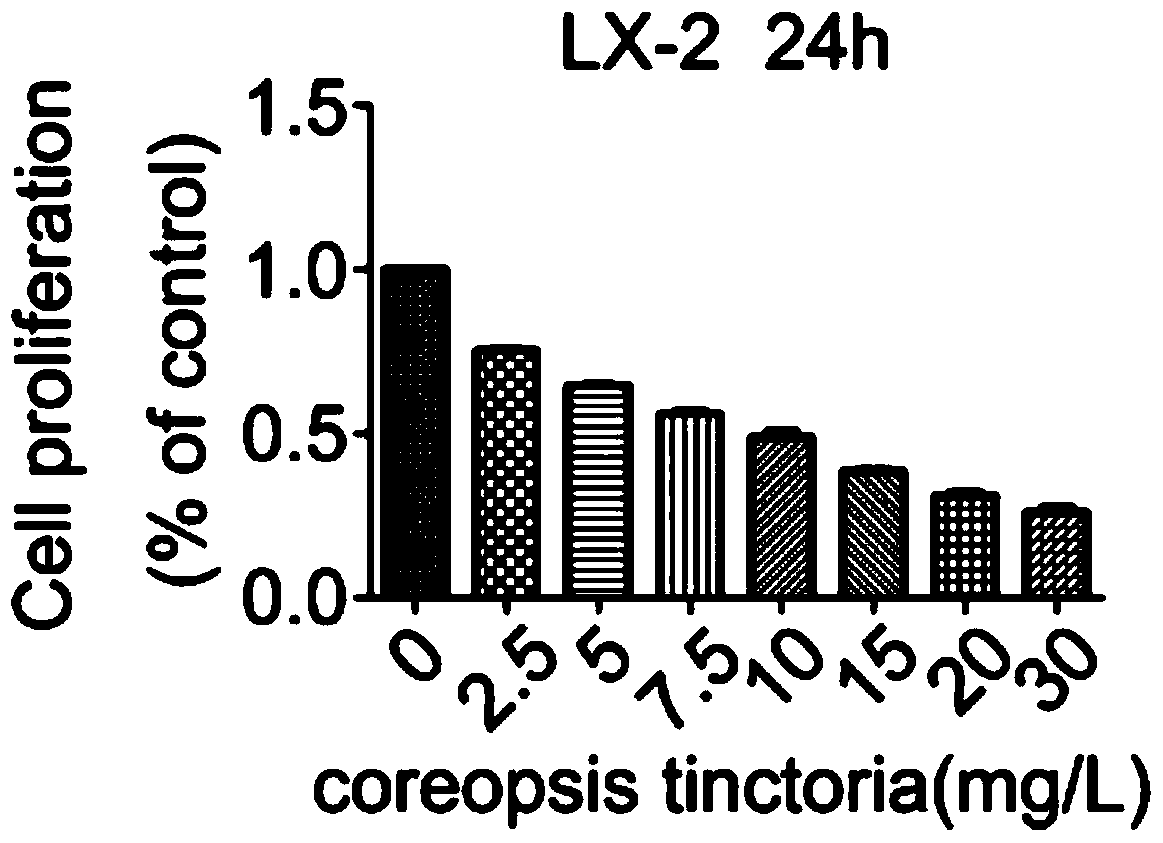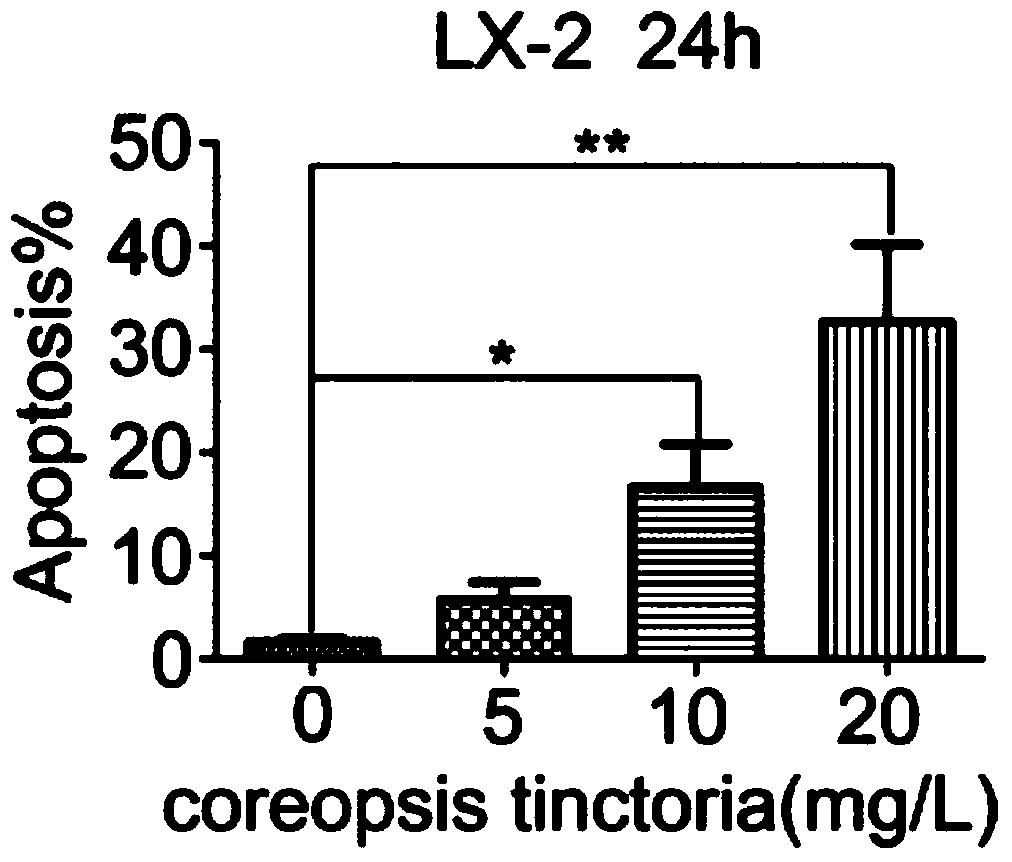Application of snow chrysanthemum extract and total flavonoids of snow chrysanthemum in the preparation of drugs for treating liver fibrosis
A liver fibrosis and extract technology, applied to the new use of snow chrysanthemum extract, the field of preparation of liver fibrosis drugs or functional food, can solve the problem of not finding snow chrysanthemum, snow chrysanthemum extract, etc.
- Summary
- Abstract
- Description
- Claims
- Application Information
AI Technical Summary
Problems solved by technology
Method used
Image
Examples
Embodiment 1
[0041] Example 1 Cell Viability Test
[0042] Cells in the logarithmic growth phase were taken (the cell concentration was 7×10 3 / ml), inoculated in a 96-well plate with 100 μl per well, and cultured in an incubator at 37° C., saturated humidity, and 5% CO2. After the cells adhered to the wall, they were replaced with medium containing the total flavonoids of snow chrysanthemum with final concentrations of 0, 2.5, 5, 7.5, 10, 15, 20, and 30 mg / L to continue the culture. Set 6 replicate wells for each concentration and culture for 24 hours. Afterwards, 20 μl of MTT (5 mg / ml in PBS) was added to each well, and after culturing for 4 hours, 150 μl of DMSO was added to each well and shaken for 10 minutes. The absorbance value was measured at a wavelength of 460 nm on an enzyme-linked immunosorbent detector. According to the formula: cell growth inhibition rate = (blank group - snow chrysanthemum total flavonoids group / D blank group) × 100%, calculate the growth inhibition rate...
Embodiment 2
[0044] Example 2 Cell Apoptosis Experiment
[0045] 1×106 cells per well were inoculated in a 6-well plate, and after the cells adhered to the wall, different concentrations of total flavonoids of snow chrysanthemum were administered, incubated for 24 hours, and LX was administered according to the instructions using the FITC-Annexin V Apoptosis Detection Kit of BD Company of the United States. -2 cells were stained with FITC-AnnexinV and PI, and the apoptosis rate was detected by flow cytometry. Cells were collected, put in an appropriate amount of lysate, lysed on ice for 30 min, centrifuged at 12000g at 4°C for 15 min, and the protein concentration was determined by BCA method. The samples were electrophoresed on 10% SDS-PAGE gel, transferred to PVDF membrane, blocked with 5% skimmed milk powder for 1 hour, coated with PARP antibody at a ratio of 1:1000, overnight at 4°C, and the corresponding secondary antibody was added after washing the membrane the next day, 37 Incubat...
Embodiment 3
[0047] Example 3 The total flavonoids of snow chrysanthemum down-regulates the expression of fibrotic protein α-SMA and ECM (type I collagen) in LX-2 cells
[0048] Cells were collected, put in an appropriate amount of lysate, lysed on ice for 30 min, centrifuged at 12000g at 4°C for 15 min, and the protein concentration was determined by BCA method. Samples were electrophoresed on 10% SDS-PAGE gel, transferred to PVDF membrane, blocked with 5% skimmed milk powder for 1 hour, coated with primary antibody at a ratio of 1:1000, overnight at 4°C, and the corresponding secondary antibody was added after washing the membrane the next day, 37 Incubate at ℃ for 1 h, and expose to the chemiluminescence gel imaging system. The following antibodies are used as primary antibodies: anti-α-SMA, anti-ECM (type I collagen).
[0049] The results showed that the total flavonoids of Snow Chrysanthemum dose-dependently inhibited the expression of α-SMA and ECM-I collagen in hepatic stellate cel...
PUM
 Login to View More
Login to View More Abstract
Description
Claims
Application Information
 Login to View More
Login to View More - R&D
- Intellectual Property
- Life Sciences
- Materials
- Tech Scout
- Unparalleled Data Quality
- Higher Quality Content
- 60% Fewer Hallucinations
Browse by: Latest US Patents, China's latest patents, Technical Efficacy Thesaurus, Application Domain, Technology Topic, Popular Technical Reports.
© 2025 PatSnap. All rights reserved.Legal|Privacy policy|Modern Slavery Act Transparency Statement|Sitemap|About US| Contact US: help@patsnap.com



